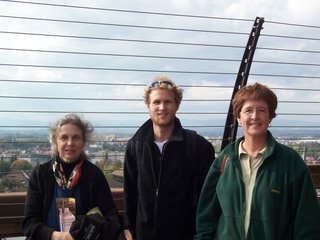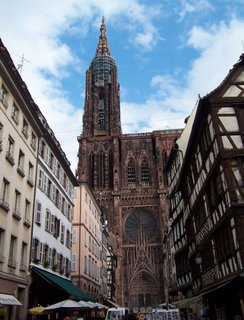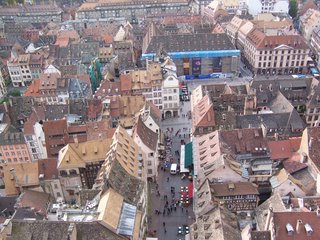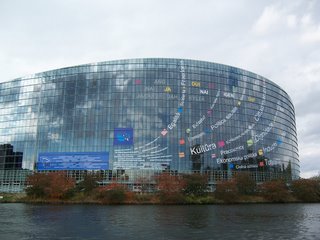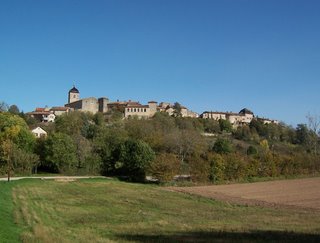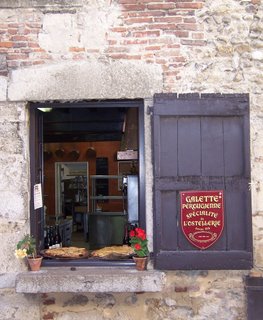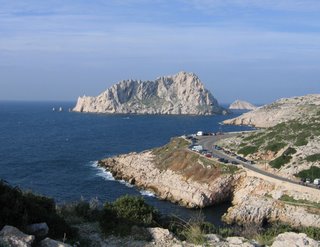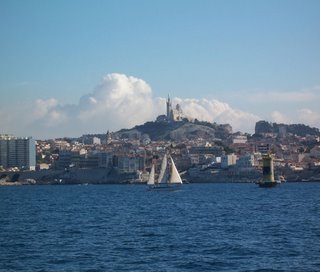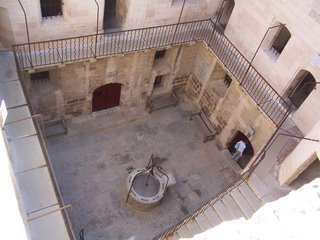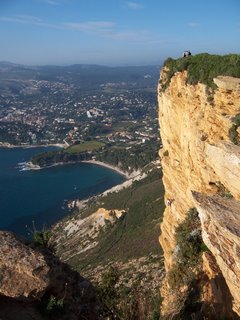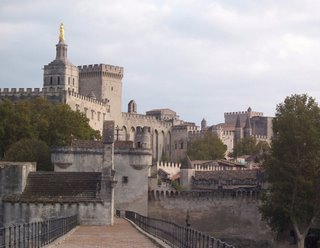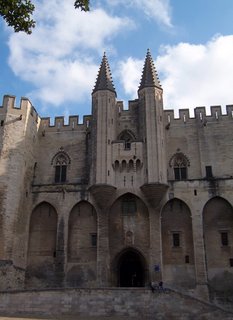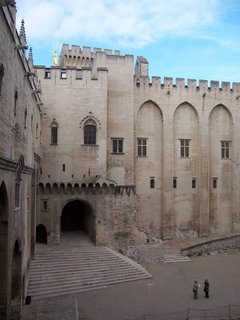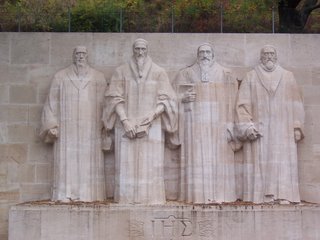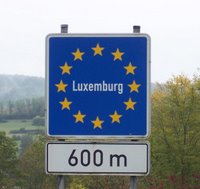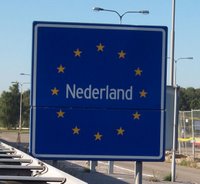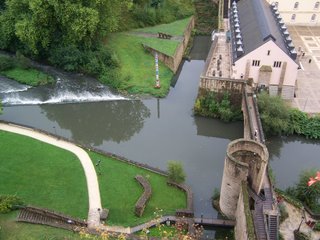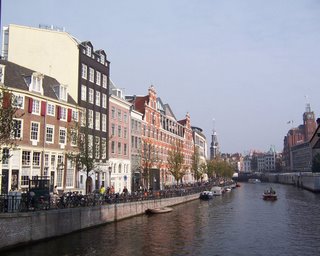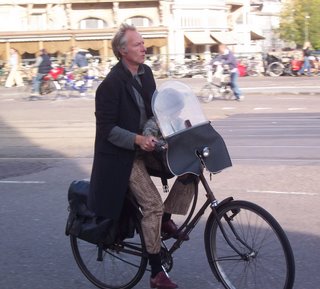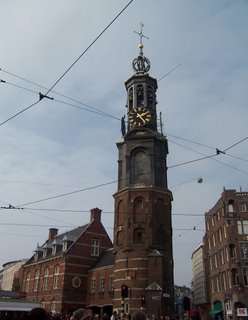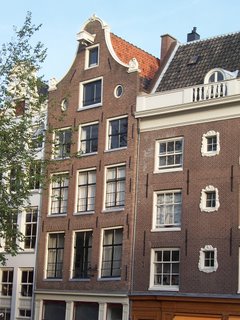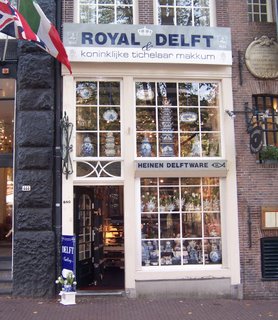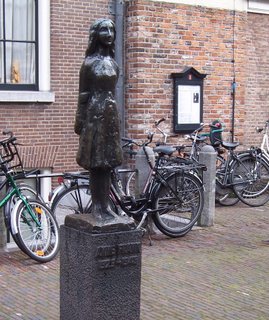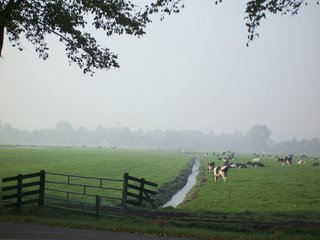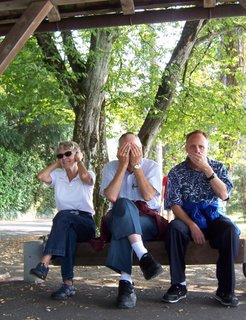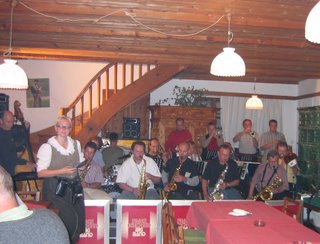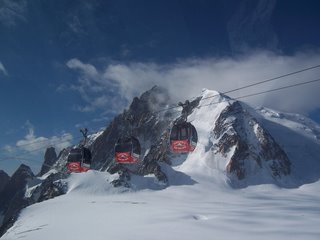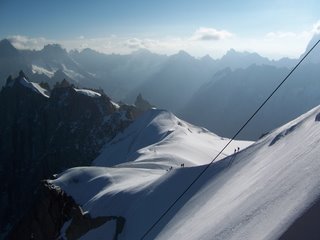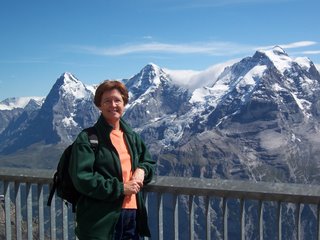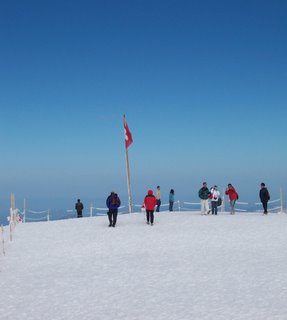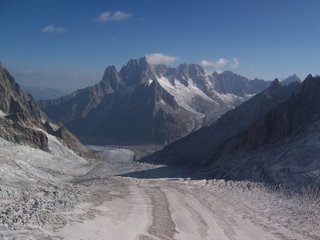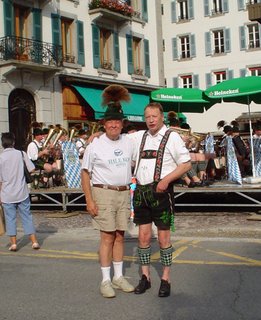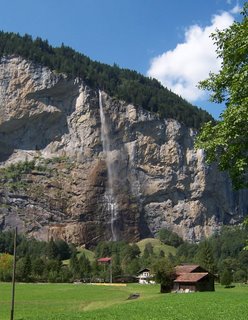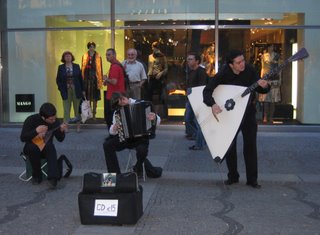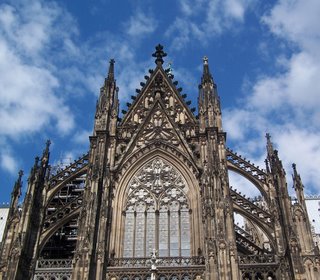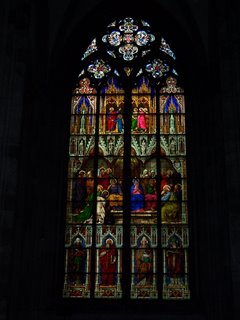My latest adventure in
Rinnie, Rob, and Nancy
On our way to visit Robbie, we stopped in
Strasbourg Cathedral
Strasbourg Cathedral
View from the Strasbourg Cathedral
European Union
Parliament Buildings
Our next excursion was a two day trip to Rothenburg with an impromptu stop along the way in Schwabish Hall and a quick stop in Wurzberg on the way home. I have written about Wurzberg before and I will save Schwabish Hall for a future travelogue since Mike has a retreat scheduled there in a couple of weeks. In Rothenburg, we did some of the usual things – the Night Watchman tour, etc - and a couple of new things as well. Two of the new things we did were actually recommended by the Night Watchman as cures for insomnia. We were definitely not plagued with insomnia but we “walked the wall” and “went to hell” anyway and found both to be quite pleasing experiences. OK, so “Hell” is a very old tavern in Rothenburg. According to the Night Watchman “if you are caught wandering the streets at night and told to go to hell, it is a good recommendation.” We don’t know what it’s like there late at night, but we can vouch for the fact that they serve good food around 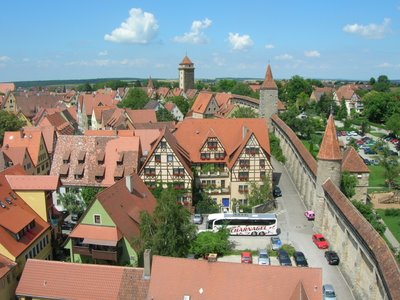
The Rothenburg Wall
To Hell (the tavern that is)
Our next excursion took us away from
Galette
On to Marseille (pronounced mar-say). We were depending on a previously proven website called “mappy.com” to get us to Jan Stutheit’s apartment in Marseille and that turned out to be a big mistake. Mappy’s direction were technically correct but of absolutely no practical value. Let’s just say that we made several phone calls to Jan and lots of U-turns before we finally found Jan’s apartment . Jan is a single missionary who works for MTW (Mission to the World – the Presbyterian Church of America’s mission agency) but is presently on loan to AWM (Arab World Ministries – a cooperative organization involving several denominations). She writes Bible studies designed specifically for use in Arab countries. She has lived in Morocco and France for most of her adult life and speaks French fluently. In Morocco she worked as a translator at the US Embassy. Jan lives in a two bedroom apartment on the 4th floor of a large apartment complex. Her apartment has 3 separate balconies looking out onto various parts of the city – one even has a view of the Mediterranean Sea. She is a very interesting person to talk to, a great tour guide and a wonderful cook, but also very exacting as a hostess and very particular about things related to her apartment --- to the degree that we were all rather relieved when it was time to move on. We did do some really interesting things however while we were at her house We took a spectacular hike along the Mediterranean coast, visited Cassis and Aix-en-Provence, and toured Nortre-Dame de la Garde (Marseille’s cathedral) and Chateau d’If (pronounced deef).
Trailhead near Jan's house
Notre-Dame de la Garde

Notre-Dame de la Garde
Jennifer, Rennie, Jan
Chateau D’If is the French version of Alcatraz - an island fortress just ouside the Marseille harbor accessible only by boat. It is the setting for the Alexander Dumas’s Count of Monte Cristo and, more importantly, the unhappy “home” of a lot of French Hugenots who were imprisoned following the revoking of the Edict of Nantes which had allowed Protestants to freely practice their religion in France.
Chateau d'If
Chateau d'IF interior courtyar
In Cassis we really wanted to take a boat tour to the calangues but somehow they weren’t running the day we were there. I convinced Rinnie and Jennifer to go back to Cassis when we left Jan’s house, but again we got there at the wrong time and the boats weren’t running. This time we were too late in the afternoon. But . . . . kudo’s to Rinnie again. With her knowledge of French and her gregarious personality she was able to convince one of the boat owners to do one more tour – provided we could come up with a total of 10 passengers. Amazingly enough, with a little help from Jennifer, she was able to do that too – and off we sailed. Several of the passengers they rounded up were young doctors and nurses from Argentina and various other countries who were doing internships at a hospital in Lyon, France. They were very friendly and fun to talk to. Calangues are narrow inlets along the coast – sort of like miniature fjords with rock walls, each having a small beach at it’s head. We visited 3 calangues and watched a spectacular sunset as we sailed back to Cassis. The trip was well worth the effort. It reminded me somewhat of houseboating on Lake Powell – one of my all time favorite vacations.
En route to Cassis
We had a couple of extra days in between Jan’s house and our next stop in Gryon, Switzerland. We ended up spending one of them at Gorges du Verdon and one at Avignon. Gorges du Verdon is a large canyon – not quite as spectacular as the Grand Canyon but close. We spent some time exploring on the way to the canyon (particularly in a little town at the east end of the canyon called Moustiers Ste-Marie) and only had time to see about a third of the canyon but it was enough to whet my fancy for more. There are roads on both rims of the canyon and we chose the south rim to avoid looking into the late afternoon sun. It was a really spectacular drive with lots of scenic viewpoints for stopping and gawking. (Scenic turnouts are usually hard to come by in Europe). Hopefully Mike and I can go back there before we leave Europe.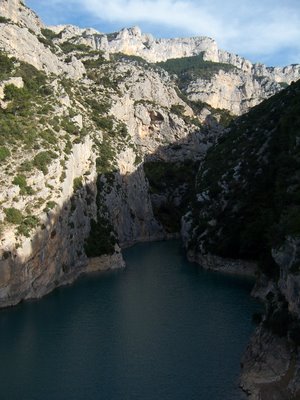
Gorges du Verdon
Avignon’s (pronounced AH-veen-yo) is inland from the Mediterranean about 50 miles. It’s claims to fame are the St. Benezet Bridge and the Palace of the Popes. The St. Benezet Bridge (Pont d’Avignon) was the only bridge crossing the Rhone River during the Middle Ages and also the subject of a nursery rhyme -- not one with which I was familiar prior to being enlightened by Rinnie and Jennifer. The Palace of the Popes is a large complex built from scratch in the 1300’s to house the pope (several of them actually) and keep the entire Catholic Church safely away from Rome until a dispute could be settled over who was the true pope. The audio guide here included entirely too much information for my taste and I had a hard time retaining anything of what I heard. The sights themselves, however, were really interesting. In case some of you haven’t experienced an “audio guide” they are a museum/palace feature that is really popular here in Europe. Each display in a museum (for example) has a number on it. You check out (or rent, as the case may be) a hand set programmed for your particular language – English, German, Japanese, etc. On your handset you punch in the number of the particular exhibit you are looking at and listen to a talk about what you are seeing. Audio guides are usually much better than actually human tour guides in my opinion. The English is usually better and the accent less extreme. Plus you can start, stop and repeat the recording at will – which is a real asset for someone like me that doesn’t learn well orally.
St. Benezet Bridge
Palace of the Popes from St. Benezet Bridge
Palace of the Popes
Palace of the Popes
Enroute from Avignon to Gryon we spent several rainy hours in Geneva, Switzerland. John Calvin preached in Geneva for many years after being thrown out of France. There is a Reformation Monument there – statues of Calvin, Beza, Zwingli, Luther, etc - and also a relatively new Reformation museum, both of which are interesting.
Reformation Wall
Our purpose in going to Gryon, Switzerland was to visit Debby Middelman (her husband Udo was in the States on a speaking tour) and her mother Edith Schaeffer. Debby’s father is Dr. Francis Schaeffer, Christian philosopher and apologist and founder of L’Abri, now deceased. Rinnie was saved at L’Abri in her early 20’s and lived in Udo and Debby’s home during part of her time there. She has maintained a relationship with them over the years. It was a real privilege to meet Debby and also her mother Edith who is now 91 years old. Edith has limited eye sight due to macular degeneration and requires some assistance in getting around, but her mind is as sharp as a tack. Edith was pretty quiet and let Debby do most of the talking, but it was clear from her facial expressions that she was following intently everything that was said.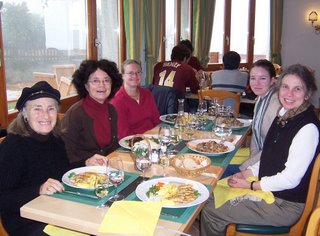
Edith Schaeffer, Debbie Middelmann, Jane, Jennifer Lind, and Rinnie Lind
When Francis Schaeffer was alive, he and Edith lived in Huemoz (2 villages away from Gryon) and opened up their home (which they named L’Abri) for people to come and study with them. Debby and Udo lived nearby and helped with the ministry. Various circumstances have resulted in Udo and Debby no longer being directly involved in the teaching at L’Abri, although they do something similar in their own home when Udo is in town. We never actually saw L’Abri except for a sign on the road. We stayed in an apartment above Edith Schaeffer’s house (she calls it “Mon Abri” which means “my shelter”) which is across the road from the Middelman’s home. Our apartment was really rustic but adequate and cozy – enough stimulating books and tapes at hand to keep one busy for a decade or two. Our apartment and several others in the back of Edith’s house serve as student chalets when Udo and Debby have students with them.
Our 3 days in Gryon were really quiet and leisurely. Our #1 priority was to spent time with Debby when she was available. Her view on topics such as Christian parenting, homeschooling, Christian self-help books, the peculiarities of Christians in America, the Iraq War etc were very interesting and insightful, though somewhat more “liberal” in some areas than I would have expected. She may just have been overstating her view to make a point. Rinnie’s #2 priority was to revisit places in the area that she remembered from her time there years ago and to show them to Jennifer. My #2 priority was to prepare for a Bible study I thought I was teaching the day I got back to Heidelberg (it ended up being cancelled!) and also to prepare for a one week apologetics class which I was about to take at the seminary in Tacoma the week before Thanksgiving. We didn’t do a lot of sightseeing, but we did manage to enjoy and soak up some of the beauty of the area as we walked or drove from place to place. Gryon and Huemoz and a larger town in between them called Villar are all ski towns. We were there after the tourists and before the skiers which was perfect timing. The towns were quiet, the countryside was still green, and the views along the road were spectacular. (Try humming the Sound of Music at this point to get the full effect.)
View near Edith's cabin
After Gryon we spent part of a day in Montreux - Rinnie and Jennifer toured Chateau Chillion – and then we headed for Zurich. In Zurich I put Rinnie and Jennifer on a plane headed for Paris and drove home to Heidelberg. I spent one day in Heidelberg -- NOT teaching my Bible study as I had planned – and then caught a military hop to Baltimore the next day. Two days in Baltimore with the Tallents and then a commercial flight to Seattle literally just in time for my class on Monday morning (my plane arrived at 4:00AM, four hours late!)
Chateau de Chillon
My apologetics class was fantastic. I would never have chosen to take apologetics – some how it just didn’t seem interesting to me - but I had sort of made up my mind to be in Tacoma that week before I knew what was going to be offered so I took it anyway. What a blessing! The teacher was superb – both in terms of his teaching skills and his grasp of the content of the class. And the content of the class was extremely valuable. I am so glad I took it. It built on some other things I have been exposed to recently and sort of crystallized my thinking in several areas.
Mike joined me and the kids in Washington for Thanksgiving week. He spent a few days in Lawton on the way moving his mother from an assisted living center to a nursing home in the same town. This was a move that had to happen eventually for financial and medical reasons, and it seemed like it made sense to do it sooner rather than later. The move went really smoothly. Mike’s brother Carl was there also and the two of them had some quality time together.
The five of us Strohm’s spent Thanksgiving weekend together in a cabin on San Juan Island. We ate lots of turkey from the local grocery store deli, did a little bit of driving around the island and went over to Orcas Island on the ferry, watched movies together and slept. It was uneventful but really nice.
Other Strohm news:
Alan has a new car – a 2005 Honda Civic. Deanna now has his old car (the Red Nissan).
Amy got accepted to Western Washington University in Bellingham. She will move up there and start classes in January. She plans to get an Environmental Science degree. Meanwhile she is finishing her AA degree at TCC and working at Grocery Outlet – trying to earn some money to do a road trip with a friend over the Christmas Holidays.
Deanna is glad to be back at Covenant High School and seems to be happily settled in as part of the Kliewer household. She is the only one of our kids who will be coming home to Germany for Christmas.
Mike is still tolerating his job in Heidelberg.
I am up to more mischief as usual. I am going to be in Tacoma for the winter quarter at the seminary. I love Germany, but I miss the intellectual stimulation of the seminary (there’s not much offered in English here in Germany!) I also miss my kids. Mike has graciously agreed to let me be gone for 11 weeks and the Kliewers have agreed to let me stay at their house so I can share Deanna’s car. I plan to leave here a couple of days before New Years – again Space A to Baltimore and then commercial to Seattle – so as to be in Tacoma by Jan 3rd, the first day of classes. I will be stopping in Colorado for a few days on the way back to Germany.
So, that’s the news from Germany.
Nancy

